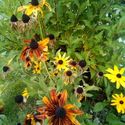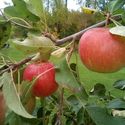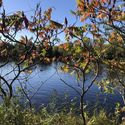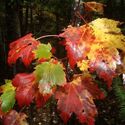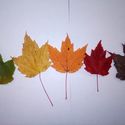Pigments color our world
October 11, 2019
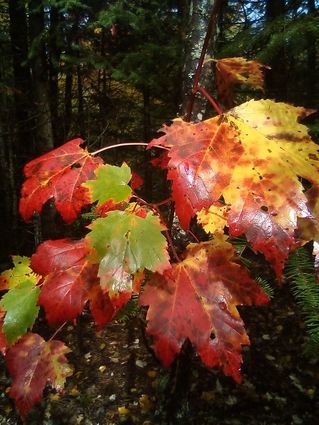
Glen Sorenson
All four of nature's pigments paint these fall leaves, including chlorophyll, xanthophyll, beta carotene and anthocyanin. Can you spot them?
Welcome to autumn: cooler, wetter, mushrooms galore, and changing leaf colors. We see green leaves all summer and now those same leaves are turning yellow, orange, red, and even purple; what's up with that?
The causes of these changes are fascinating. The pigments in the leaves are also responsible for the red in apples, orange in carrots, blue in blueberries, purple in eggplant, and the yellow in "dandy lions."
The functions of these pigments vary: they can attract pollinators such as bees, butterflies, and hummingbirds; they can protect plant tissue from overheating and intense sunlight; and they capture the sun's energy and use it to build glucose. Glucose is one of the basic building blocks of almost every living organism.
These pigments have names, and are visible at certain times during the growing season. Chlorophyll is present throughout the summer; it reflects green light and uses all the other colors of the rainbow to trap the sun's energy. This energy is then used to combine water and carbon dioxide, forming our friend, glucose. This process is called photosynthesis. Chlorophyll is a word derived from the Greek words, "khloros" ("green") and "phullon" ("leaf").
When daylight hours shorten, the chlorophyll breaks down and the yellow pigment, which was there all summer, can now be seen. This pigment is called xanthopyll, and it aids the chlorophyll in photosynthesis by trapping light the chlorophyll can't. The Greek words "xanthos" ("yellow") and "phullon" are the root words.
There is also pigment that is orange in color. Beta carotene is the name given to this pigment. "Beta" is Greek for the second letter of their alphabet and "carotene" is Latin for "carrot." Beta carotene also aids in trapping colors of light that the chlorophyll is unable to. In the fall these yellows and oranges outlast chlorophyll, and can now take credit for the work they did all summer.
Maple, dogwood, and sumac leaves can be a beautiful deep red this time of year; the pigments that create red and purple leaves belong to a group called anthocyanins. The derivation of this word is also Greek, "anthos" ("flower") and "kuanes" ("blue").
Why blue, when the leaves are red? This pigment does give blue color to many plants, hence the suffix "cyanin" - but a variation of it is red. The role of anthocyanin was not fully understood for some time; today, plant physiologists believe this pigment actually protects the leaves from too much sun by absorbing high-energy light.
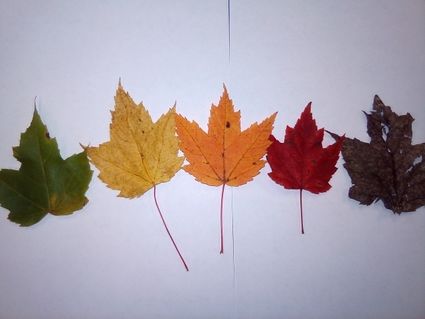
Glen Sorenson
Nature's pigments are displayed individually here. From left, you have chlorophyll, xanthophyll, beta carotene, anthocyanin and a decomposing leaf on display.
Nature's colors are all around. Next time you are out on a walk, take a camera or a bag with you and photograph or collect as many different colors as you can. You may even discover a new color, or find a color you like for the next time you paint a room.
Fond du Lac Tribal and Community College science tutor Glen Sorenson was Minnesota Teacher of the Year before he retired from teaching science at Proctor High School after 30-plus years. Want more science from Glen? Find his ongoing "What's That?" videos on the FDLTCC Facebook page.



